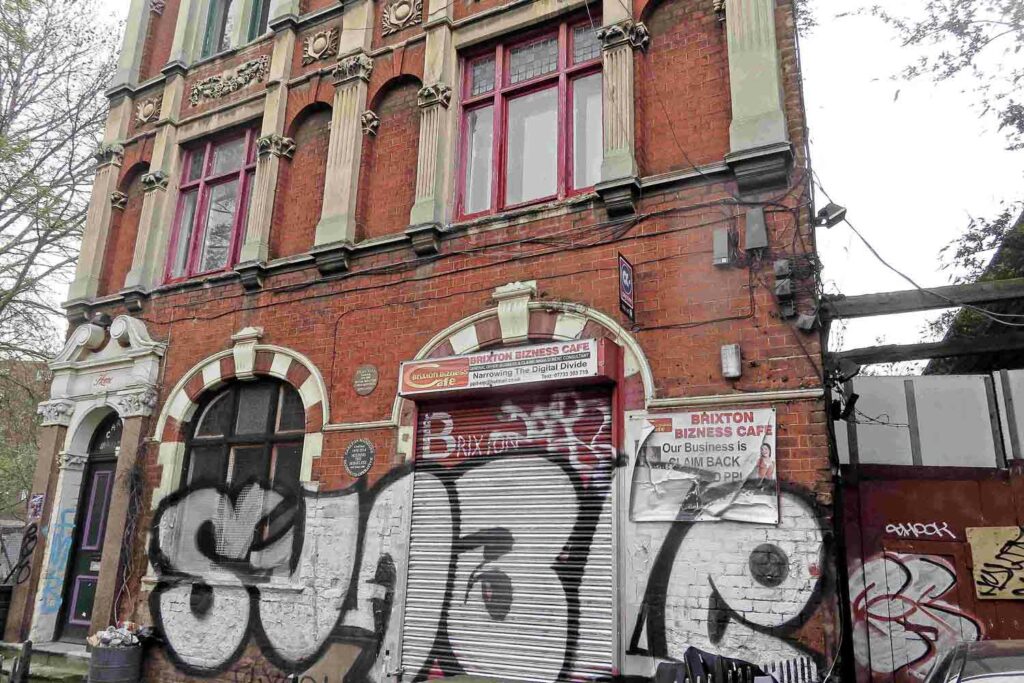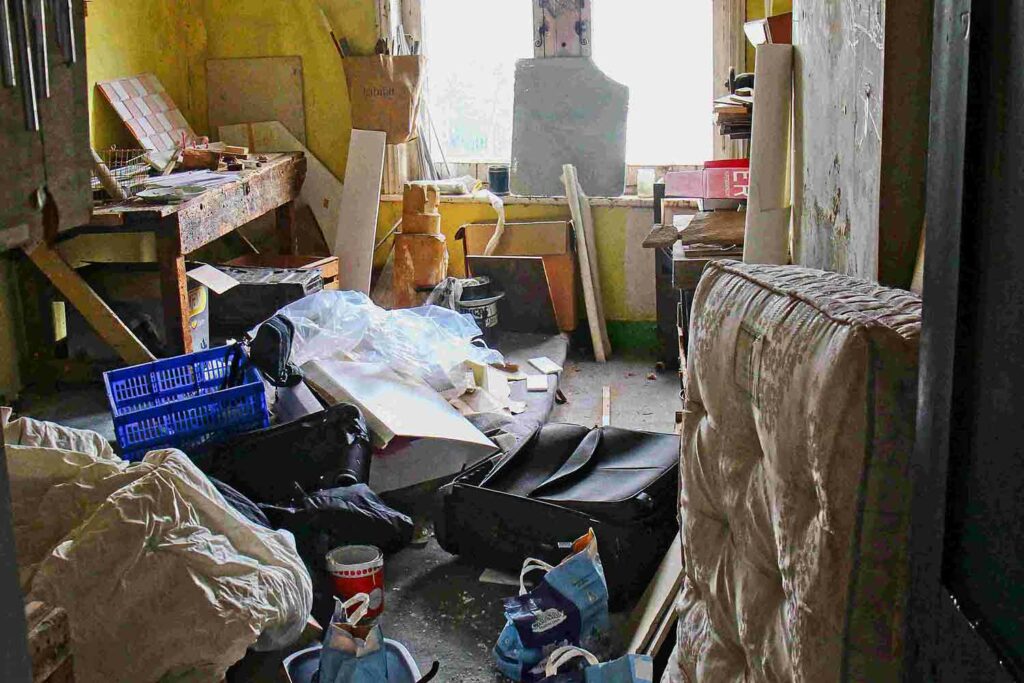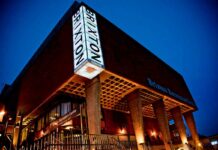Local architect Zac Monro tells Alan Slingsby why Carlton Mansions on Coldharbour Lane is such a significant building for Brixton and how his practice set about saving its spirit

If one building can bear witness to how Brixton has changed and is changing, it’s Carlton Mansions near the junction of Atlantic Road and Coldharbour Lane.
Once an elegant home for South London commuters right next to Brixton station, later a famous housing co-op, it now contains 26 high-end workspaces.
Built in 1891 – “a mansion block in Queen Anne style” – the building escaped the Second World War Blitz and has had at least two more escapes – both thanks to local people.
From 1979 to 2014, it was saved from dereliction and demolition by a housing co-operative, giving a roof to homeless people “and many cats”, according to one of several unofficial plaques on its walls.
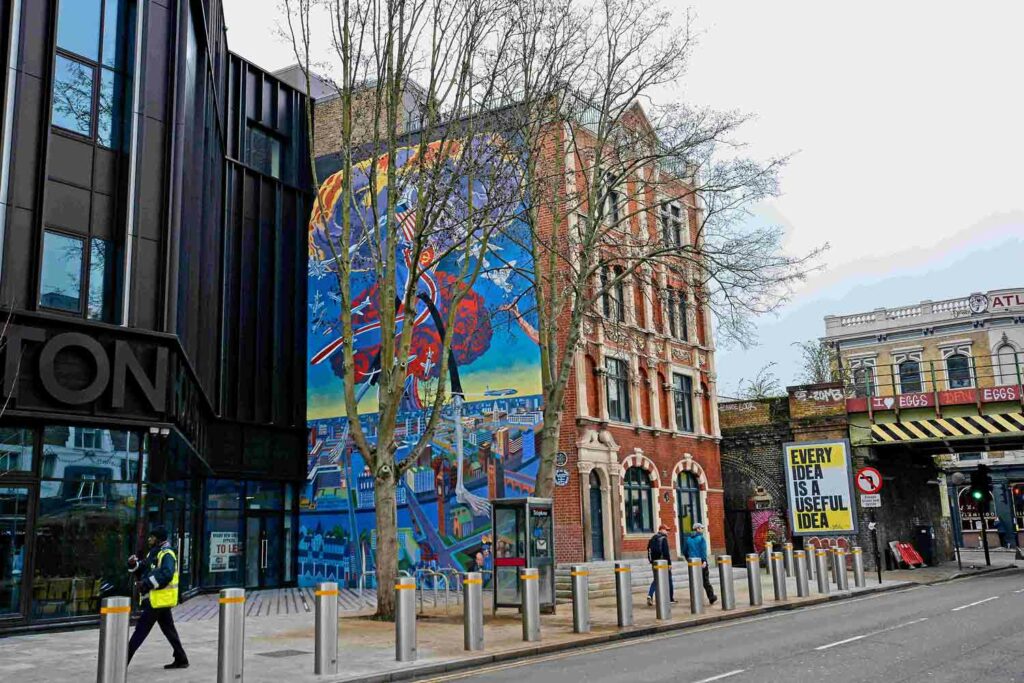
Emptied of its inhabitants by Lambeth council in 2014, planning permission for development of the area was granted almost five years ago on 23 March, 2017.
Now, with help from the practice of Brixton-based architect Zac Monro, who is also a local resident, its elegant form is still a presence opposite Brixton Village’s Granville Arcade.
And Brian Barnes’ famous Nuclear Dawn mural on the side of Carlton Mansions has regained its full chilling impact, thanks as much to its complete restoration as to Vladimir Putin.
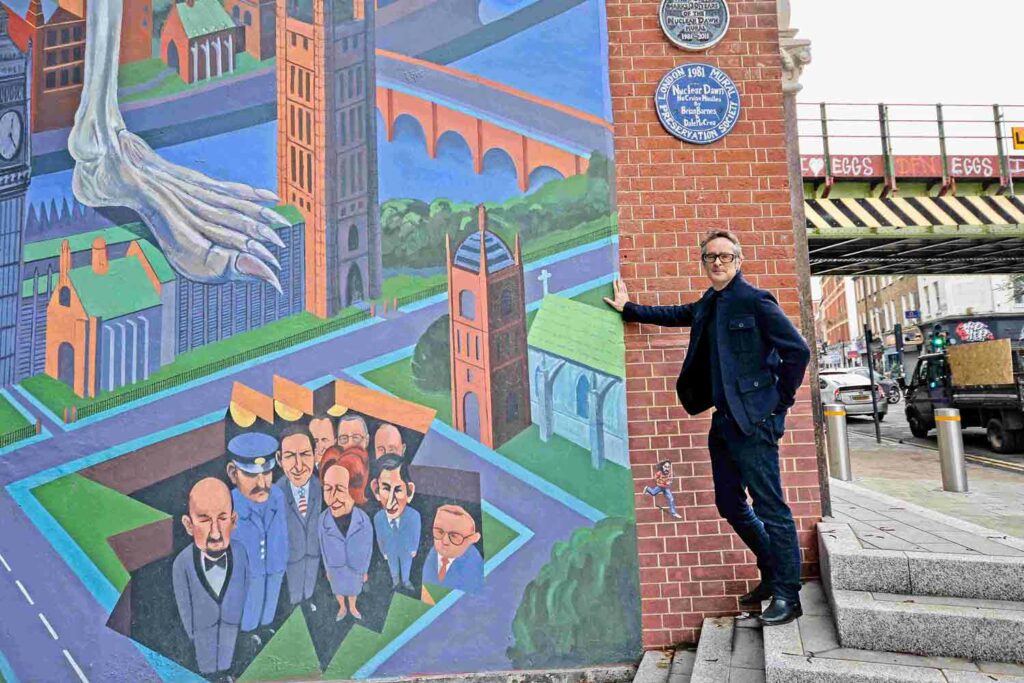
Completion of Carlton Mansions’ redevelopment may have been overshadowed by the opening of its neighbour, Brixton House theatre, but, as Monro says, “It is a significant part of our history”.
With his brief to “save the spirit of the building”, Nuclear Dawn was one of the things that Monro made sure remained, despite challenges.
Some members of the construction team were not fans. One described it as “just a big skull” and “not very pleasant”.
But not only did it stay, it has been restored to its former glory despite the top tiers of the building having to be totally rebuilt.
There have been compromises. Where once there were three staircases, there is now a single one. “Stuff had to be engineered out to save the building,” says Monro.
“It could have been sacrificed to short-term pragmatism,” he adds.
There was discussion of complete demolition and rebuilding, because it was in such a bad state. There were no arguments, but there were “strong discussions with the money people”.

The building was saved and the original room sizes have been retained along with features like now-redundant chimneys.
It required extra structural stabilisation because the theatre next door, to which it is connected on two levels, sits above an underground siding for the Brixton terminus of the Victoria Underground line.
While he has been “proposing things for Brixton for years,” including plans for the Windrush Square toilets, “It’s the first time we’ve had a hand in a bit of Brixton,” Monro says of the commission.
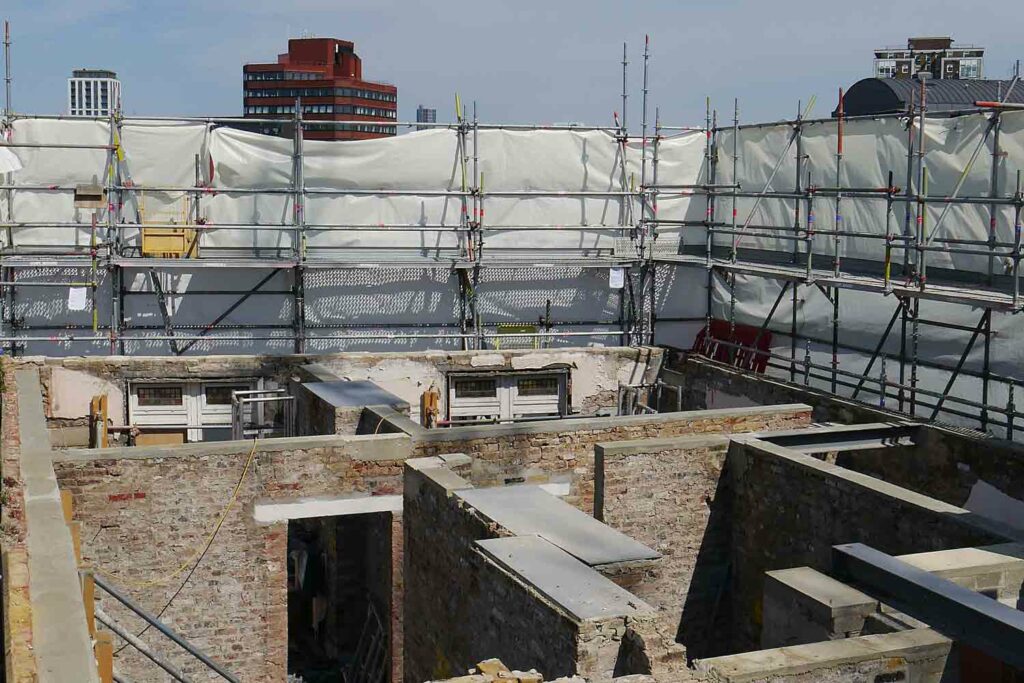
He’s hardly unknown locally though. The Blog’s post about his conversion of “The Brockwell Park house” is our all-time most viewed, thanks to the appearance of the house on TV’s Grand Designs.
Carlton Mansions is “a significant bit of architecture,” Monro says. “It’s kind of sacred in a way. Part of all the events that have happened in Brixton.”

He suspects, from reading the deeds of the building, that it played a part in the most significant part of Brixton’s recent history – housing the newly arrived Windrush Generation.
Deborah Bestwick, director of Ovalhouse, the predecessor of Brixton House, was keen to document the interior of Carlton Mansions before work on it began.
“There were still rooms where we found the beans people had left on the cooker,” says Monro.
But, he adds, “people were coming in and taking stuff” and Carlton Mansions held some culturally valuable surprises.
Among them are two decorated keystones from St Agnes Place in Kennington, probably London’s longest running squat.

“They’re one of things we’ve got to put back,” Monro says.
He is well aware of changes in Brixton, recalling that the bars and restaurants on the parade facing Southwyck House, the “Barrier Block” were not there six years ago.
A Foxton’s “for sale” sign has been spotted in the Moorlands Estate behind the block. Now run by a housing association, it is a former Lambeth council estate.

The day before work began at the car park where the new theatre now stands, he alerted a woman parked there. “Manifestly everything she had was in that car,” he says. “It was shocking”.
The formal sign-off for Carlton Mansions, which will be run by Brixton House, is due this week.
“We would have liked to get our own space in Carlton Mansions,” says Monro. “But it’s already all taken.”
Carlton Mansions stories from the Blog


